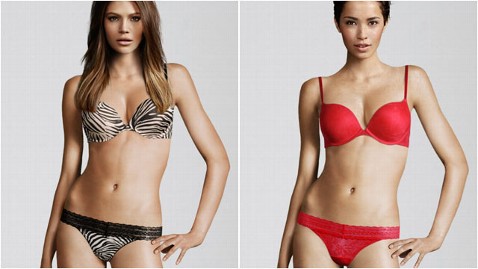Clothing Giant H&M Defends ‘Perfect’ Virtual Models

H&M
Visiting the H&M website is not the only virtual experience to be had by H&M customers who choose to order the company's clothes online instead of inside one of their 2,300 global retail stores.
Also "completely virtual" are the models at the center of H&M's swimsuit and lingerie online campaigns, the Swedish-based retailer confirmed.
"It's not a real body; it is completely virtual and made by the computer," H&M press officer Hacan Andersson told Swedish newspaper Aftonbladet in an article questioning the company's picture-perfect online models.
In the Dec. 4 article, translated into English by U.S. celebrity website Jezebel, Andersson explained the company's approach.
"We take pictures of the clothes on a doll that stands in the shop, and then create the human appearance with a program on [a] computer," he said.
Images from the company's website show models wearing the latest swimsuit and lingerie looks appear in generic, stock-form with their left hand resting slightly below their waist, right arm straight and face looking directly ahead.
Advertising watchdogs in the company's native Scandanavia elevated the controversy by criticizing the chain of lower-cost clothing stores for their generic approach to models.
The Norwegian Broadcasting Corporation, one of the most outspoken groups to criticize H&M, accused the chain of "creating unrealistic physical ideals."
"This illustrates very well the sky-high aesthetic demands placed on the female body," spokesman Helle Vaagland said. "The demands are so great that H&M, among the poor photo models, cannot find someone with both body and face that can sell their bikinis."
Andersonn defended the company's decision to rely on virtual instead of real models by explaining that computer-generated bodies would ensure that the garments remain the focus of online shoppers' attention, not the model's bodies.
"It's not about ideals or to show off a perfect body, we are doing this to show off the garments," he told Aftonbladet. "This is done for all garments, not just underwear. It applies to both women's and men's clothing."
A spokeswoman for the company's U.S. operations compared the use of virtual models online to the common retail practice of using mannequins in stores.
"In our Shop Online we show our fashion through real life models pictures, still life pictures or as virtual mannequin pictures," the spokeswoman, Nicole Christie, told ABCNews.com. "The virtual mannequins are used in the same way as we use mannequins in our stores for ladies wear and menswear."
Christie confirmed Andersonn's description of how H&M creates its virtual models, as well as the intention behind the practice, one she said is common.
"This technique can be found in use throughout the industry," Christie said. "This is not to be seen as conveying a specific ideal or body type, but merely a technique to show our garments."
Responding to the fire the company has come under in just the two days since the Aftonbladet article was published, Christie issued this statement to ABC:
"It is regrettable if we have led anyone to believe that the virtual mannequins should be real bodies. This is incorrect and has never been our intention. We will continue to discuss internally how we can be clearer about this in the information towards our customers."